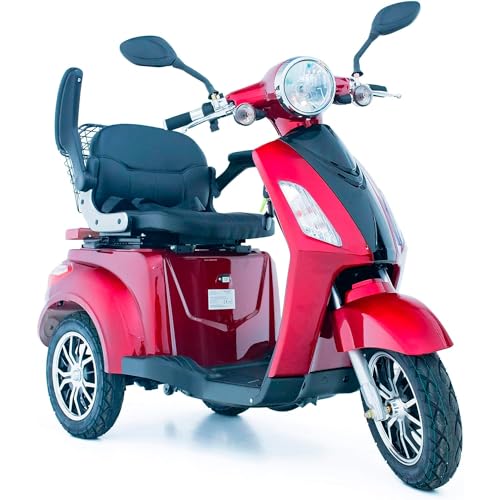10 Healthy Habits To Use Green Power

Scooter Green Power
Scooters are an enjoyable and safe method to travel. Scooters are also green. It is important to conduct your research prior buying one.
mobility power aren't as carbon-free as they appear. They have hidden costs. The production and mining of the batteries that power electric scooters create significant emissions. Transporting scooters from places where riders leave them to charging stations also adds to their environmental footprint.
Battery Life
Battery is among the most important components in any scooter. It has a huge impact on how eco-friendly your scooter is. This is because when the battery fails, it releases toxic chemicals into the atmosphere which can have a major ecological and economic impact.
Electric scooters are extremely energy efficient, using a fraction of the electricity that cars do when driving the same distance. This helps reduce air pollution and climate change, and it helps to reduce congestion in traffic. However, they do produce some carbon dioxide when charging. If it is derived from renewable sources, it could make the e-scooter even more sustainable.
Many scooters come with interchangeable batteries that can be used to recharge other scooters in the fleet. This reduces the need for companies transporting the batteries to recharge. Some companies are also experimenting with hyper-local energy production, which allows the grid to use the power stored in the batteries to regulate demand and supply.
If you plan on using your scooter for long journeys take a look at buying a bigger battery or a second one that you can swap out. You can travel further distances without having to recharge the battery so often. This is particularly crucial if you live in a region that has harsh weather conditions. It is also recommended to recharge the battery prior to placing it in storage for a period of weeks or months at one time. If you don't do this, the battery may not keep a charge until it is needed again. This can be both uncomfortable and risky.
Overall, electric scooters have a less environmental impact than other types of transportation. They emit fewer greenhouse gases which contribute to global warming and require less raw material to manufacture. They can be powered by clean energy, which reduces their carbon footprint. When contemplating the durability of a scooter, it's important to take into account its entire life cycle. This includes the process of manufacturing, the energy used to charge it, and its disposal.
Design
Electric scooters' design can have a major impact on their green credibility. For example, scooters with Regenerative braking systems are able to convert some of the energy that would otherwise go to waste into a longer battery life so they can travel further with each charge. A lot of scooters can be designed to travel shorter distances, which can reduce the number of car trips required. And, unlike traditional vehicles, scooters emit no carbon dioxide during use.
However, it is important to think about the environmental impact throughout the lifecycle of electric scooters. This includes the extraction of raw materials, the manufacturing and the disposal at the end of life. The production of lithium ion batteries is energy intensive and can result in destruction of habitats pollution of soil and water, and greenhouse gases. In addition, transportation and mining of raw materials could have a significant impact on the environment.
Another major problem with scooters is their lack of durability. The average scooter lasts only a few months on the streets before it is taken off the road. This could force scooter companies to extract more aluminum and engage in more resource-intensive processes such as shipping. Since the majority of scooters are rented rather than owned, the scooters must be collected and transported to recharge stations (often by cars) when they run out of juice.

Scooters could contain hazardous wastes that could be a threat to the public health and the environment. If the waste is not properly recycled, it could end up in landfills and rivers, where people and wildlife could be at risk.
While scooters are generally better for the environment than conventional vehicles, there are still a number of issues that need to be addressed in order to make them completely eco friendly. If all scooters were constructed from 100% recyclable materials, and if the power they powered came from renewable sources, then they would be a carbon-free mode of transportation.
Maintenance
The price of electric scooters is less expensive than an ordinary vehicle. However, it needs routine maintenance. The primary element is the battery pack. It needs to be replenished frequently and charged when it is nearing the end of life. The speed controller is a factor as well. This can impact the performance when it's malfunctioning.
If the scooter stops or stops while riding, this is typically a sign of a faulty battery pack. It could be a fuse or a charger that isn't working correctly. Check the lights on the charger to make sure they're green (charging) and not red (off). Even if you don't intend to use the scooter, it is an ideal practice to charge it every time it is in storage.
Another common issue is a faulty normally closed brake lever switch. To check for this, disconnect the wire from the switch for the brake lever and connect the terminals within the controller's connector the wire is disconnected from. If the scooter continues to run without stopping, the switch is defective.
Throughout the day, scooter services allow people to drive cars or trucks and then return to their workspaces any electric scooter that has run out of power. This type of service helps to keep the fleet in working in good working order. It also allows them to recharge the batteries for the next ride. However, a lot of people do not have this option and have to replace their scooters in the event that they are unable to recharge their batteries while on the go.
